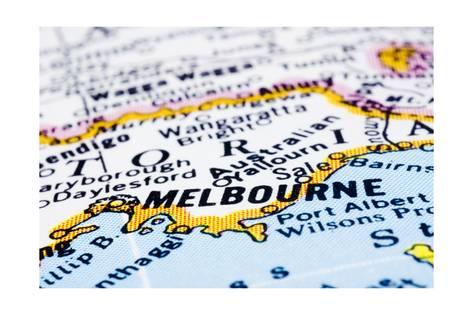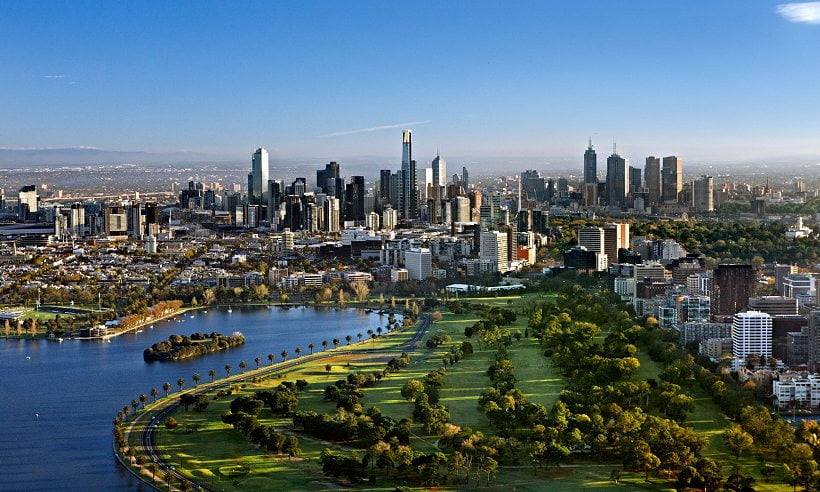A consistent rise of real estate prices and low tenant vacancy rates have both been reliable attribute in owning an investment property in Melbourne.
Melbourne does have its chilly seasons, and a lot of locals joke that we experience four seasons in a single day.
The upside is Melbournians don’t have to deal with tropical storms, cyclones, monsoon seasons, volcanoes, heavy snow, or rain that could mess with the economy.
Capital Growth: What Part Of Melbourne Has The Most Demand?
The best way to remember the hot suburbs in Melbourne is to compare it to real estate prices on a Monopoly board.
At the start of the game (Melbourne’s Western Suburbs) property is most affordable, then as you work your way around the board things start to get more expensive. Towards the end of the board they have some really pricey real estate that pays big rents. This represents the East and South-Eastern suburbs of Melbourne.
This is evident when examining a map of Melbourne; you’ll observe that the Eastern suburbs extend roughly 60km from the CBD, whereas the West spans approximately 35km.
Unit, House or Apartment?
Buying a house always gives you more long-term options. You can renovate, knock-down or rebuild one or even two dwellings.
With an equivalent investment in a house, a unit has the potential to surpass in capital growth, provided it’s situated in the right suburb.
Units generally entail lower running costs, reduced maintenance requirements, and are easily leasable. While you can renovate a unit, expanding the property’s size or subdividing is usually impractical.
Check out our Property Investor Podcast.
The choice between the two would come down to working out what type of investor you are.
Acquiring apartments can be a risky and should be approached with caution. Numerous apartments have not experienced appreciation in value over the past decade, often burdened by high annual fees that can be financially draining and built with subpar quality.
Melbourne’s Best Suburbs, depending on your budget.
Up to $1M
Western Suburbs:
Williams landing, Altona meadows & Altona North.
Northern Suburbs:
Preston, West Brunswick & Coburg.
Eastern Suburbs.
Glen Huntly & Murrumbeena.
South Eastern Suburbs
Mordialloc, Aspendale & Edithvale.
$1M to $2M+ Budget
Western Suburbs
Yarraville, Williamstown & Footscray.
Northern Suburbs
Brunswick, Essendon & Flemington.
North Eastern
Balywn, Doncaster & Kew.
Eastern
Hawthorn, Malvern East & Armadale.
South Eastern.
Brighton, Elwood & Prahran.
Spotting a Great Suburb?
You will notice all the suburbs with the most demand have a lot in common, for instance:
 None are located in developing parts of Melbourne. New suburbs lack infrastructure, schools and lifestyle amenities. As the population of Melbourne booms the outer suburbs are getting known for traffic problems.
None are located in developing parts of Melbourne. New suburbs lack infrastructure, schools and lifestyle amenities. As the population of Melbourne booms the outer suburbs are getting known for traffic problems.
Developing suburbs are located in the far corners of the east (Pakenham), north (Craigieburn) and west of Melbourne (Wyndham Vale).
All have zoned schools that only accept students the live locally, this stands for public or private schools a like. To work out school zone in a suburb you like check out find my school zone, it’s run by the state government of Victoria.
Some premium schools can increase the price or real estate dramatically within school zone boundaries. Check out our article on why school zones increase property values.
All have major infrastructure located near by. Trams, trains or access to highways.
Cafés & restaurants are never too far away. In fact Melbourne is famous for its café culture so it makes sense to buy in suburbs that support the culture.
Natural amenities are always another big winner that offer residence great lifestyle choices. In Melbourne premium real estate is located around Port Phillip Bay or the Yarra River. You will notice Melbourne’s most expensive real estate is located around the bay.
For more great suburbs, check out our article on: Top 20 Growth Suburbs Melbourne Or Melbourne’s Most Affordable Suburbs.
Over the past three decades, the real estate market in Melbourne has witnessed remarkable growth, and there are strong indications that property will remain a highly reliable investment in the long run.
Entering the market is becoming progressively challenging each year, and for the first time, it’s becoming exceedingly difficult for newcomers. Making astute decisions is crucial for your sustained success as an investor.
At Wise Real Estate Advice, we guarantee that all aspects are thoroughly considered, and we approach the buying process with genuine care, providing buyers with the wise advice and actions necessary for a successful purchase.








